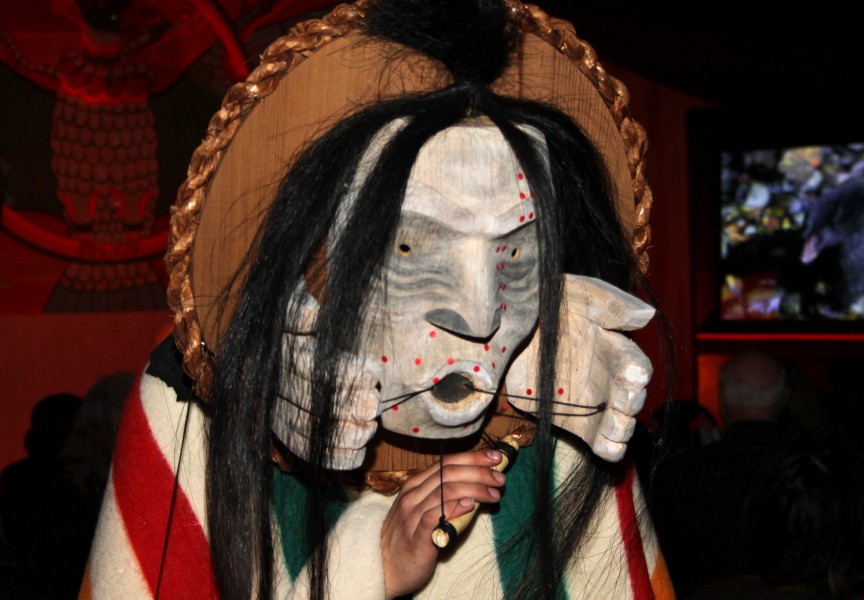Children and caregivers flocked to Maht Mahs Gym for Spring Break Family Camp, which ran from March 17 through 21.
On Thursday, organizer Gail K. Gus said the all-day event had attracted between 50 and 75 children each day.
“But not the same kids every day,” she added. “We had children from Tla-o-qui-aht, Hesquiaht, Ahousaht and Hupacasath, along with our own Tseshaht kids. And every day, we have had children from Usma taking part. These are children who are in care.”
The children (and adults) took part in a wide variety of activities, but the one constant was lahal. Each day, Steve Lucas set up a game.
“We had a class to teach the children as well,” Gus said.
Each day, the children worked on crafts, traditional and non-traditional, with materials donated by Hupacasath First Nation. One demonstration was definitely out of the ordinary, Gus said.
“On Monday and Wednesday, Charley Frow harvested eagles.” Gus quickly explained that the eagle carcasses were actually donated by the B.C. Conservation Service.
“She took the eagles apart and we donated the feathers to groups like [Alberni Community and Women’s Service Centre], the Dancing Spirit Group and our Tseshaht Daycare.”
Tuesday was the first Movie Night. Fifteen kids camped out at the gym. Organizers were set for the second Movie Night on Thursday.
Cultural activities figured heavily, including stories from elders Irma Robinson and Julia Lucas, as well as sports and games and Vision Boards from Quu’asa.
At the cedarbark weaving table, Geraldine Edgar-Tom prepared strips of bark and demonstrated her art to students young and old.
Hazel Jack and granddaughter Elisa Jules had already completed and were wearing identical headbands and were working on baskets.
“This is my first ever,” Jack said, proudly fanning out the fringes of the band. “This is the first time weaving for both of us.”
Behind the Longhouse at 2 p.m., John Rampanen “and his Warriors, Ian and Luke,” had just encased a feast of traditional foods in an underground oven, in part of an all-day process.
“These guys dug out the fire pit, starting at 5 a.m.,” Rampanen explained. “The pit was lined with river rocks and we let the fire burn for three hours.”
After removing the larger, still-burning pieces of wood and making a nearby campfire, the crew laid down a layer each of salal, then swordfern, before placing the first layer of food (salmon and cod fillets, plus prawns).
Then another layer of swordfern, followed by more food. First, some crab, then a layer of root vegetables including potatoes and beets, plus plenty of garlic bulbs.
“Then more swordfern, then salal, topped with sod,” Rampanen explained. “That’s topped with burlap. Traditionally, we would use cedar mat or skunk cabbage, but it’s a little too early for skunk cabbage.”
Leaving a stout pole buried in the core of the pit, it is then covered with a layer of dirt.
“You pull out the pole and pour three litres of water down the ‘filler-hole,’ then seal it up and let it cook about three hours,” he said, adding, “deer would take longer.”
The camp was to wrap up Friday evening with a Recovery Family Dance Celebration organized by Quu’asa.






